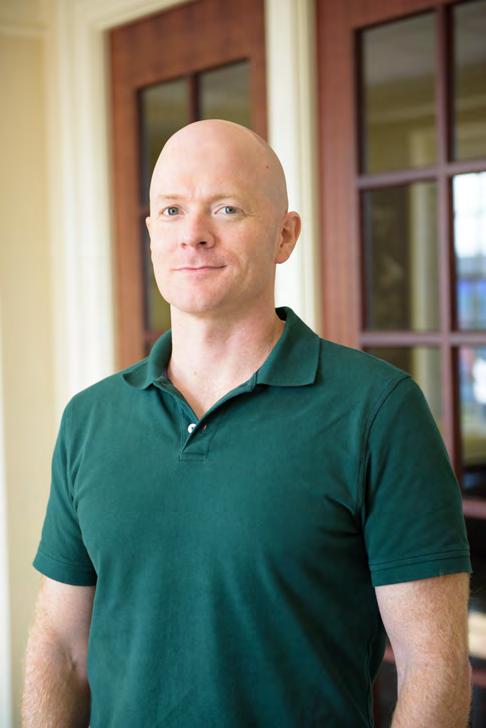A Brief History of High Point University 8
I
n 1924 High Point College opened as a cooperative venture between the Methodist Protestant church and the city of High Point. The campus consisted of three partially completed buildings, there were nine faculty members, and student enrollment was 122. Today the University has 122 buildings, is attractively landscaped, the full-time teaching faculty numbers 330, and nearly 5,200 students are enrolled in a wide variety of undergraduate and graduate programs. The Methodist Protestant Church, which is now part of The United Methodist Church, first became active in educational pursuits in North Carolina in the middle of the 19th century. Of the various institutions which it sponsored, the most ambitious was Yadkin College, which operated in Davidson County from 1856 to 1895 but failed because of its isolated rural location. At the turn of the century, the vision of a church-related college was revived by the Reverend Joseph F. McCulloch of Greensboro, who labored for nearly a quarter-century to make it a reality. The Annual Conference finally voted to proceed in 1921. Shortly afterwards it accepted an offer from the thriving city of High Point to contribute 60 acres of land and $100,000 to the project. Classes began in September 1924, even as the finishing touches were still being added to the original buildings. The atmosphere of confidence that attended the birth of the College ended abruptly with the Great Depression. For many years thereafter, the struggle to survive was a severe one. Faculty salaries were eventually in arrears by as much as fifteen years, while students occasionally paid tuition in chickens, pigs, and vegetables. In 1934 the College
underwent bankruptcy and reorganization in an effort to reduce its indebtedness. Yet slowly this situation began to improve. By the end of the decade, library and gymnasium facilities had been added, and (with W.P.A. assistance) an athletic stadium was constructed. Financial stability ultimately returned with the liquidation of the debt in 1945. The postwar decades brought renewed prosperity and rapid growth. Under the influences of the G.I. Bill and the “baby boom” of the 1940s and 1950s, enrollment more than tripled, with a corresponding increase in staff. The College’s programs received full regional accreditation in 1951. Additional facilities were added in response to this growth in size and professionalism: four residence halls between 1953 and 1968, two classroom buildings, a second gymnasium, an auditorium, a chapel, and a campus center. Crowning the physical expansion was Smith Library, completed in the spring of 1984, with a capacity three times the size of the former facility. The original men’s residence hall was replaced in 1987 with a 221-resident facility. The Millis Athletic/Convocation Center was opened in late 1992 and provides facilities for convocations, physical education, athletic, and health activities. On October 9, 1991, by the action of the Board of Trustees, the name of High Point College was changed to High Point University. In December 2012, High Point University was approved by the Southern Association of Colleges and Schools Commission on Colleges to begin awarding doctoral degrees, and in May, 2016, the university graduated its first cohort of educational leadership doctoral students.


























